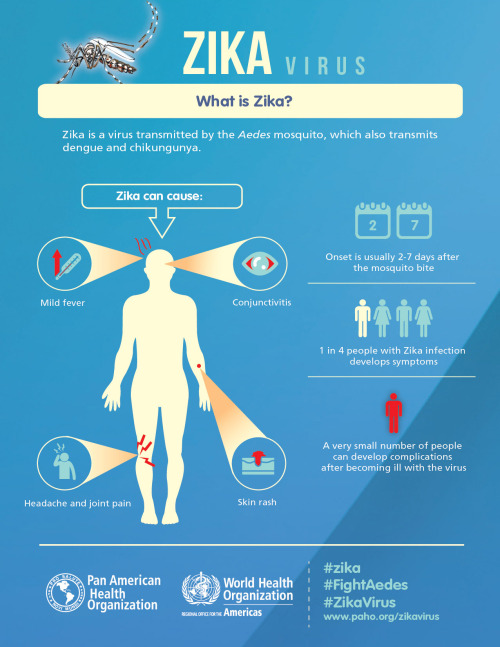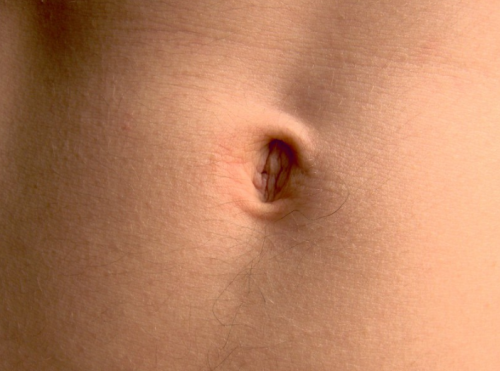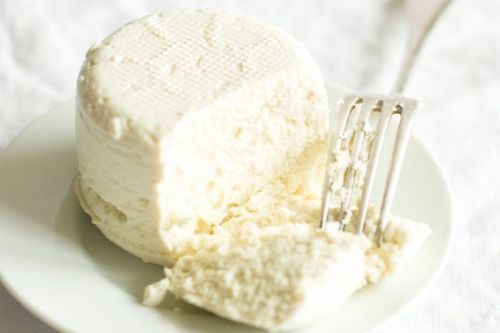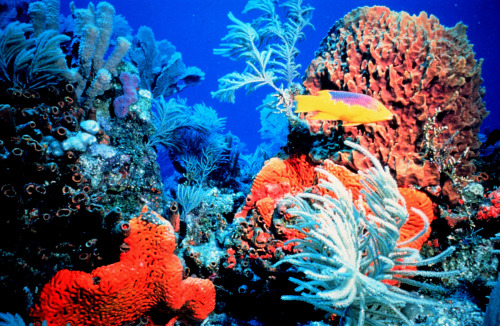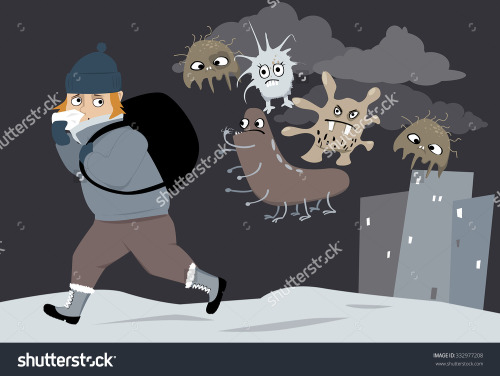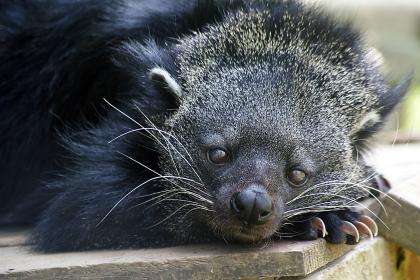#microbiology
Larvae fighting! From a water creek sample.
Close up of larvae from creek water sample.
Larvae fighting other organisms. Protective of food.
Microorganisms swimming
Rotifers, possibly.
Algae and microorganisms
Larvae and other organisms.
Tonsillitis is inflammation of the pharyngeal tonsils.
- Inflammationusually extends to the adenoid and the lingual tonsils
- Most commonly viral
- Most cases of bacterial tonsillitis are caused by group A beta-hemolytic Streptococcus pyogenes (GABHS) - strep throat.
- Spread through the air.
Symptoms may include sore throat, fever, enlargement of the tonsils, trouble swallowing, and large lymph nodes around the neck. Complications include peritonsillar abscess.

Recurrent tonsillitis
- A polymicrobial flora consisting of both aerobic and anaerobic bacteria
- Other competing bacteria are reduced - less interference to GABHS infection.
- Streptococcus pneumoniae, Staphylococcus aureus, and Haemophilus influenzae are the most common bacteria isolated in recurrent tonsillitis, and Bacteroides fragilis is the most common anaerobic bacterium isolated in recurrent tonsillitis.
- The microbiologies of recurrent tonsillitis in children and adults are different; adults show more bacterial isolates, with a higher recovery rate of Prevotella species, Porphyromonas species, and B fragilis organisms , whereas children show more GABHS. Also, adults more often have bacteria that produce beta-lactamase.
Chronic tonsillitis
- Polymicrobial bacterial population present
- There is likely a relationship between tonsillar size and chronic bacterial tonsillitis based on both the aerobic bacterial load and the absolute number of B and T lymphocytes.
- Fewer dendritic cells on the surface epithelium and more in the crypts and extrafollicular areas during chronic tonsillitis.
- Radiation exposure may relate to the development of chronic tonsillitis. A high prevalence of chronic tonsillitis was noted following the Chernobyl nuclear reactor accident in the former Soviet Union.
If you’ve gone to the Google homepage at some point today, you’ll have noticed the above doodle of Nettie Stevens.
Today (July 7, 2016) marks the 155th birthday of Nettie Stevens, a woman who made major contributions in the discovery of the X and Y chromosomes. Though the work is frequently attributed to her male colleagues Thomas Hunt Morgan and Edmund Beecher Wilson, many argue that more credit should be given to this pioneering female biologist.
Born in Vermont in 1861, Nettie Stevens worked as a teacher of physiology and zoology before saving enough money to enroll at Stanford at age 35. Stevens then completed her PhD work at Bryn Mawr, where she became a student of T. H. Morgan and E. B. Wilson. By the time she had finished her PhD, she had already published nine papers, and was soon after given an award of $1,000. With this grant, Stevens began her work on chromosomes.
In the 1890s, Stevens began studying mealworm beetles, and noticed that the females had 20 chromosomes of the same size, whereas males had 19 chromosomes of the same size and one smaller one. Stevens correctly theorized that the size of this final chromosome determines the sex of an organism. While Wilson came to similar results at the time, it is argued that Stevens made original contributions that should not be overlooked. Through careful dating of their published work and correspondence, it is clear that many of the important ideas of sex inheritance should be attributed to Stevens.
Though Wilson got the credit for so much of her research, before her death, she had the honor of being listed among 1,000 leading American “men of science”.
Read more about Nettie at Genes to Genomes, read about the undervaluing of her contributions atVox, or learn some fun facts about her at The Independent.
Happy birthday, Nettie Stevens!
Post link
The mosquito-borne Zika virus has begun appearing in North America, with recent numbers released by the New York Department of Health indicating over 233 cases in New York City alone since January. Though most of the New York cases are believed to be travel-related (mainly from those recently in the Dominican Republic), at least two cases in New York State are thought to be the result of sexual transmission. Nine other countries have also reported Zika infections in people who had not traveled to distinct outbreak areas but who had sexual contact with others who had.
According to the CDC, all known cases of sexual Zika transmission have been male to female and have been caused by either vaginal, anal, or oral sex without a condom. This type of transmission is particularly worrisome since men do not necessarily need to exhibit symptoms at the time of transmission.
On the CDC’s page on Zika and Sexual transmission, they state that there is a lot that we still do not know about Zika and sex:
- We don’t know if men with Zika who never develop symptoms have the virus in their semen or if they can pass Zika through sex.
- We don’t know if a woman with Zika can pass the virus to her sex partners.
- We don’t know if Zika can be passed through vaginal fluids during vaginal or oral (mouth-to-vagina) sex.
- We don’t know if Zika can be passed through saliva during kissing.
- We don’t know if sexual transmission of Zika poses a different risk of birth defects than mosquito-borne transmission.
Despite a impasse in congressional funding, Zika sex research has begun in the U.S.. Reuters recently reported that “Borrowing money earmarked for other programs, the U.S. National Institute of Allergy and Infectious Diseases has started enrolling men infected with Zika in Brazil and Colombia in the study to determine how long the virus remains transmittable in semen. The study could take years to complete, but interim results could help public health officials fine-tune their recommendations on sex.
“We are going out on a limb, but we have to,” Dr. Anthony Fauci, director of the U.S. institute, said in an interview. “We can’t say we’re going to wait until we get all the money.””
Read more about the rash of Zika Cases in NYC in The New York Times here.
Read more about the sexual transmission of Zika at the CDC here.
Post link
Did you know? Your belly button is home to much, much more than just the occasional piece of lint.
In 2012, researchers observed spectacular microbial diversity in belly buttons—in 60 different belly buttons surveyed, they found a total of nearly 2,400 phylotypes (a phylotype is shorthand in microbiome studies for “species”) of bacteria. The vast majority of these phylotypes (2,188) were found in fewer than 10 percent of the belly buttons studied. Even though there were 200 or so phylotypes found in more than 10 percent of the belly buttons, none of these were found in all belly buttons, and only eight phylotypes are found in more than 70 percent of the belly buttons. The authors of the work suggest that the belly button biodiversity is on par with the animal diversity in a jungle!
Post link
It’s a common topic in microbiology forums that the past century’s obsession with cleanliness has contributed to our increasing allergies and autoimmune disorders. Rises in nut allergies, celiac disease, and gastrointestinal diseases suggest that something has changed for the worse in our bodies.
Many scientists, such as gastroenterologist Joel Weinstock of Tufts, believe the removal of parasites in the digestive system is the problem. Weinstock believes that “re-parasitizing” can be the answer to diseases such as one patient’s ulcerative colitis. This inflammatory bowel disease has been on the rise in the U.S. since the early 20th century–coinciding with the elimination of parasites like whipworm from American society. Weinstock has had success inserting Trichuris suis, or pig whipworm, into those suffering from gastrointestinal disorders (he uses the pig variety to prevent spreading of the virus between human hosts). After 12 weeks, 43% of his patients saw improvement.
For one patient, Vik, the mild improvements he saw from the pig whipworm were not enough, and he acquired human whipworm eggs from a doctor in Thailand. After experimenting to activate the eggs at home, he began swallowing them regularly, and saw pretty immediate improvements. Vik’s success with the parasite was neither unprecedented nor unique. Whole communities of people, fed up with medicines unable to help them, turn to self-treatment or alternative treatment in parasites.
Though the results are mixed and mainstream doctors continue to advise against parasite treatment, the tone in these communities remains hopeful. Alex Loukas, a parasitologist at James Cook University in Australia who published a paper on parasites curing celiac disease, said “modern medicine has just failed” these people. For many, this seemingly drastic cure is the only option.
Read more here.
Post link
Salk Institute researchers have just given us all a new view of immune cells using super-resolution microscopy. The images above show T-Cell receptors during an immune response, and are the first pictures to show this process in lymph nodes. Every new image and discovery in this field gets us closer to a more total understanding how our body’s immune system works, and perhaps how to apply our own immunities to treat autoimmune diseases, infections or cancer.
“We had seen these receptors cluster and reposition in cultured cells that were artificially stimulated in the lab, but we’ve never seen their natural arrangements in lymph nodes until now,” says senior author Björn Lillemeier, an associate professor in Salk’s Nomis Laboratories for Immunobiology and Microbial Pathogenesis, and the Waitt Advanced Biophotonics Center.
Learn more about this amazing discovery here, and don’t forget to spend a few seconds marveling at these amazing photographs of this microscopic world inside us all!
Post link
Today’s upsetting cheese-related news concerns a batch of goat cheese sold by London artisanal cheese maker Neal’s Yard Dairy. Due to harmful bacteria–Listeria–in the cheese, it’s been recalled. Listeria can cause flu-like symptoms, such as fever, muscle pain, chills, nausea, and diarrhea, as well as lead to meningitis.
But, as we know, all cheese is full of bacteria, of course! So let’s use this news report as an excuse to discuss how our favorite topic, microbes, relates to cheese.
Eating cheese is essentially an exercise in smelling, tasting, and feeling the effects that bacteria make on milk. Some think that cheese was invented by accident thousands of years ago when men would transport milk in the internal organs of animals - the shaking of the milk combined with the bacteria naturally found within animals’ stomachs created a primitive version of cheese. Without bacteria, cheese would be bland and uninteresting. However, this doesn’t mean that cheese makers don’t need to be careful in keeping the bad bacteria out while inviting the good bacteria in to ripen and flavor their cheese.
Only a few types of bacteria are used for most modern cheeses, though many say that traditional cheeses are more interesting and flavorful because of the greater variety of bacteria they use. According to Serious Eats, today, the bacteria most often used in cheese come in five kinds: lactic acid bacteria, which keep out bad bacteria, ripen the cheese and add flavor; propionic acid bacteria, which digest the acetic acid and produce propionic acid and carbon dioxide (where the holes in Swiss cheese come from); blue molds that grow in the small cracks within ripening cheese like Roquefort; white molds that grow outside many soft cheeses like Camembert, creating ripe outer layers; and smear bacteria, which add the stinky, almost rotten, characteristic of cheeses like Müenster.
And what about the bad bacteria? CurdNerd explains how harmful bacteria can find their way into a cheese if its environment is unclean or has poor air circulation, the cheese is not perfectly dry, it has been left sitting in whey, it has been cross contaminated between cheeses, or if it hasn’t been salted properly. Many of the bad molds can be removed without sacrificing the whole cheese while the cheese is still being made, but if your cheese starts growing something fuzzy at home, it’s probably best to just throw it out instead of sampling your new bacteria!
Want to learn more about the microbiology of cheese? Check out this video from The American Society For Microbiology, or click on any of the links above!
Post link
Several years ago, snorkelers off the Greek island of Zakynthos were amazed to find what they thought were the remains of an ancient Greek civilization submerged in the shallow water. What appeared to be stone columns and column bases, so common to the Hellenic landscape, scattered the sea floor, giving the impression of ancient architecture taken over by the sea.
However,a recent paper published in Marine and Petroleum Geology explains that the column-like structures are not stone at all, but were created by microbes in a process that breaks down methane gas!
The methane moves up through faults in the Earth into the sediment that makes up the seabed. Here, bacteria in the sediment consume the methane and thus change the chemical makeup of the surrounding seawater. This causes dissolved minerals to precipitate out of the water and form a type of rock called dolomite, which cements the sediment and forms concretions. The concretions take the shape of columns and similar donut shapes because of the way the methane flows through the sentiment.
While not unheard of, concretion structures are uncommon in such shallow waters. Similar phenomena have been seen frequently in the North Sea and in fracking sites. Julian Andrews, the head researcher, reported to CNN that “these gas leaks are quite common” and that “the earth’s crust is quite a leaky material.” Andrews continues to explain that the Zakynthos site is notable for its “shallow setting.”
While the snorkeling tourists might be disappointed that they didn’t stumble across a real-life Atlantis, for those of us who love microbiology, this discovery is just as golden!
To read more, check out the full article.
Post link
Why is a mouth like a coral reef?
No, this isn’t a nonsense riddle form Lewis Carroll. But it is the subject of the most recent episode of This Week in Virology (TWiV), where host Vincent Racaniello talks with guests David Pride and Forest Rohwer about their work in the microbiomes of human mouths and the viromes of coral reefs. These two worlds have more in common than you might think when it comes to viruses and bacteria!
“Biology is really all mucus,” (10:09), says cohost Alan Dove, and this is certainly true of coral reefs. According to microbial ecologist Rohwer, coral has thick mucus layers that interact with the ocean and the microbes that come with it. Living inside coral are huge numbers of microorganisms, like dinoflagellates, and when different microorganisms from the water interact with them, a number of things happen. Usually, when phages meet bacteria, they constantly fight each other, but in some coral at certain densities the phages are likely to become prophages that instead protect the bacteria from other phages. The phages, with the mucus, create a kind of protective barrier.
And what about the mouth? “We’re just a coral reef turned inside out,” (12:17) says Dove, as Pride, doctor of Microbiology and Immunology, explains how the saliva microbiome washes over and interacts with the multiple microbiomes located within the mouth. These different microbiomes, called microniches, are all essentially distinct from one another, containing their own makeup of viruses. If some of the viruses are removed, as by using some antibiotics, the makeup is drastically altered, and a space is left open for many more things to come in.
Rohwer notes that the same is true for coral reefs; if phages are removed, bacteria increase and slow the system down. If you add the phages back in, the bacteria decrease again.
“If you mess with any one component of this,” says cohost Rich Condit, “you’re potentially reaching a crisis where the whole thing spins out of control and crashes” (52.48).
Post link
It’s a regular Wednesday morning, and some of you reading this might be sitting in your office, sipping coffee, just trying to get through your morning workload.
You might be sitting in a cubicle, surrounded by coworkers, or you might have your own office, but we’re here to remind you that you’re never truly alone at work - we share our office chairs and keyboards with microbes, and breathe the same office air as them! Don’t take out your sanitizer just yet, because, after all, not allmicrobes are harmful! In fact, they are a big part of our environment.
We’ve all heard of microbiomes in the gut that are specific to the individual - but now there are reported, scientific findings that show that microbiomes also exist in the office. According to studies conducted by Gregory Caporaso and his team at Northern Arizona University, every office environment has a microbiome that’s specific to its location. The specificity is the result of varied external environments.
The study was conducted in nine offices across Flagstaff, San Dieog, and Toronto, all chosen for their varied climates. Collection plates were installed in offices in each of these cities, and the plates were covered in materials such as carpet, tile, and drywall to test for microbial differences across materials.
Researchers then discovered that there were no differences in bacterial communities across materials, but that their location in a particular room did matter. Overall, samples taken from offices in the same city were more similar to one another than samples from other cities. This is mostly a result of the external environment, such as climate, vegetation, and industry.
It remains to be discovered whether some microbiomes are making us unhealthier than others. However, we could potentially use this knowledge to make our environments healthier by engineering healthier microbiomes. This technology might sound like science fiction, but, then again, just 15 years ago, so did smartphones!
Read more about cities and their unique microbes here.
Post link
You may not know what a binturong looks like… but you probably know what it smells like. The binturong, or bearcat, of Southeast Asia smells distinctly like buttered popcorn! A new study from Duke on the chemical compound in this civit’s urine has determined that the scent’s source is 2-acetyl-1-pyrroline (or 2-AP)– the same compound that makes your mouth water in a movie theater.
Using gas chromatography-mass spectrometry, researchers were able to isolate and identify 29 chemical compounds in binturong urine. Since the animals pee while squatting, their feet and tails are often soaked, which leaves their distinctive aroma on both their bodies and in the branches and leaves of the trees they climb as a kind of scent trail.
What’s more, 2-AP was among the few compounds that lingered and became more dominant over time, a fact the researchers discovered when a rush airmail shipment of frozen binturong urine was delayed on a hot tarmac en route to co-author Thomas Goodwin of Hendrix College in Arkansas for analysis.
The remaining mystery is how they are able to form 2-AP at such low temperatures. In the popcorn popping process, for example, the compound is only released with high heat.
“If you were to make this compound, you would have to use temperatures above what most animals can achieve physiologically,” said Christine Drea, a professor of evolutionary anthropology at Duke who led the study. “How does this animal make a cooking smell, but without cooking?”
Read more on this delicious/disgusting mystery here!
Post link




